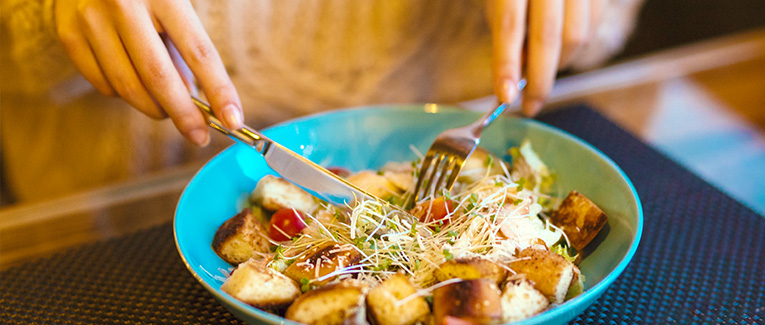
Say you’re at a fancy restaurant seated opposite a distinguished American guest. You don’t want to hopelessly stab and jab at your food in such a formal setting, especially when you’re trying to make a good impression.
You would argue that you’re eating the correct way. To you, this might be correct, but to an American it is not. Your country’s style of handling utensils might appear unsightly to the American eye.
Sure, picking up a fork or knife with the wrong hand is not the end of the world. Nevertheless, it can be considered impolite, and you certainly don’t want to be thought of as lacking in etiquettes, even if you’re new to the country.
It’s okay to be unaware, but it’s not alright to remain ignorant.
So, let us run through some quick tips regarding table setting and cutlery handling. This guide will prove useful whenever you eat in a formal American setting.
Familiarize Yourself with the American Dinner Table
In most cases, you’ll have your standard fork, knife, and spoon. Trouble arises when you see multiple pieces of cutlery. Don’t let this baffle you.
A fancy American dinner table will often have four to seven pieces of silverware. There will never be more than three utensils on either side of the plate. This includes different sizes of forks, knives, and spoons, and the arrangement depends on the restaurant.
Here are a few tips to navigate the American dinner table:
- Work your way from the outside to the inside. Cutlery is always placed in order of their use. Utensils for appetizers, which will be used first, are placed farthest from the dinner plate. The dessert cutlery is placed closest to the plate.
- If there are three forks to your left, the outermost fork is the salad fork. The innermost fork is for dessert.
- As a rule of thumb, the largest fork and knife are for the main dish. They are called a place fork and knife, or a dinner fork and knife.
- You will generally find two spoons to your right, next to the dinner knife. The small one is the teaspoon. The large one is the soup spoon.
- Dessert silverware is also placed above the plate. If that is the case, cutlery on either side of the plate is not for dessert. It makes things easier. In this case, there might be an extra knife to your right. That is the butter knife.
- Sometimes, you’ll find an extra fork. If it is on the left side, it is a fish fork. Those are usually placed between the salad fork and the place fork. If it is to your right, it is an oyster fork. These scenarios will occur rarely.
Maneuvering Utensils the American Way
Once you have identified the purpose of each utensil, the real game begins. How you handle your silverware is your mark of sophistication. So, pay special attention to this section.
Here is the basic rule: left hand for forks, and right hand for knives and spoons. Reverse this rule if you are left-handed.
Holding
Hold your fork like a pen. Pinch the handle with your thumb and middle finger, while resting your index finger on top. The teeth of the fork should be facing downwards.
When holding the knife, rest your index finger on the blunt edge of the blade, pointing straight. Wrap the rest of your fingers around the handle.
Cutting
Gently slice your food with the knife as you hold it down with your fork. Keep the fork closer to you than the knife.
Don’t pick up the fork or keep it in your hands when you’re not actually cutting the food. Rest it along the edge of your plate. Your silverware should not touch the table once it has touched the food. This is both well-mannered and hygienic.
Eating
Now switch hands. After putting the knife down, take the fork in your dominant hand and turn it upwards. You can now use it to eat.
This is called the zig-zag method, or fork switching. This method is unique to the American dining style. It has also earned a name for being a time-consuming hassle. Fork switching is one of the oldest eating styles, and it still persists in America.
This rule applies at all times during the meal. Even when you are not cutting something, you are always supposed to eat with your dominant hand.
Pausing
Sometimes you will need to pause between bites. Maybe you’re feeling a little full, or you’re chatting with people at the table. It is impolite to do so with cutlery in your hands, and placing your silverware the wrong way may signal the waiter to take your plate away.
The right way to place your cutlery while pausing is quite simple. Put the knife on your plate, to the right, in the 4 o’clock position, blade inwards. The fork should be placed to the left side in the 8 o’clock position. Teeth should be facing upwards. Placing the knife and fork in different directions is the key.
Finishing
Once you are done eating, place your knife and fork side by side with the blade inwards and the fork pointing upwards. It signals to your waiter to clear your plate. Although, your waiter may still ask before taking away your plate.
Relax and Enjoy Your Food
Don’t get too carried away with the details of courtesy and etiquette. If you are nervous or preoccupied about holding your cutlery the right way, it will show. More importantly, you won’t be able to enjoy your dinner or your company. That defeats the whole purpose of dining out. Remember, your personality makes the foremost impression, not your manners. People can overlook a few bad table manners if they enjoy your company. If you get too engrossed in the technicalities, your personality won’t shine through. So, take it easy.

